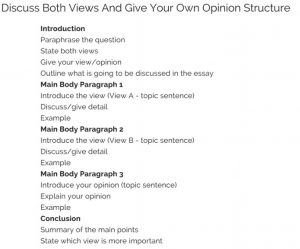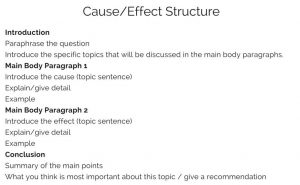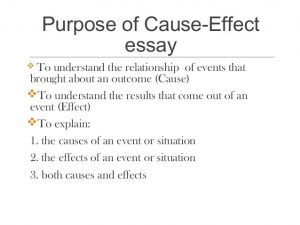کلاس آمادگی آیلتس (IELTS) ، آنلاین و حضوری
دوره های آمادگی آزمون آیلتس

IELTS
The International English Language Testing System (IELTS) is the world’s most popular English language proficiency test for higher education and global migration, with over 3 million tests taken in the last year.
Trusted for excellence in English language learning.
More than 10,000 organizations globally trust IELTS, so when you take the assessment you can be confident that it is recognized by educational institutions, employers, governments and professional bodies around the world.
How does IELTS work?
IELTS has been developed by some of the world’s leading language assessment experts and will test the full range of English skills needed for success in your new job or study placement abroad. You’ll be assessed on the following elements:
- Listening
- Reading
- Writing
- Speaking
The test is designed to reflect the sort of language spoken every day in an English-speaking country and even covers variations such as British English, American and Australian English.
Part of the assessment is a real-life conversation that will allow you to communicate effectively with English speakers across the globe.
Choosing the right test
IELTS Academic
If you’re planning to attend university for an undergraduate or postgraduate degree or you want to work with a professional organization, you’ll need to take our IELTS Academic test.
IELTS General Training
For studying courses below degree level, work-related training or if you intend to emigrate to an English-speaking country, our IELTS General Training will provide you with the language skills you’ll need to participate fully in your country of choice.
Applying for a UK Visa
IELTS is accepted by the UK Government for UK Visa and Immigration (UKVI) applications. Both IELTS Academic and IELTS General Training meet the requirements specified by the UK Home Office.
When using IELTS as part of a UKVI application, you’ll need to take the test in a secure IELTS test centre, which has been approved for this purpose by the UK Government.
Test format
The IELTS test assesses your abilities in listening, reading, writing and speaking – in less than three hours.
There are two types of the IELTS test: IELTS Academic and IELTS General Training. Listening and Speaking are the same for both tests, but the subject matter of the Reading and Writing components differs depending on which test you take.
The Listening, Reading and Writing components of all IELTS tests are completed on the same day, with no breaks in between them.
The Speaking component, however, can be completed up to a week before or after the other tests. Your test centre will advise.
The total test time is 2 hours and 45 minutes.
- Listening
- Academic Reading
- General Training Reading
- Academic Writing
- General Training Writing
- Speaking
Test format – Listening
30 minutes
You will listen to four recordings of native English speakers and then write your answers to a series of questions.
- Recording 1 – a conversation between two people set in an everyday social context.
- Recording 2 – a monologue set in an everyday social context, e.g. a speech about local facilities.
- Recording 3 – a conversation between up to four people set in an educational or training context, e.g. a university tutor and a student discussing an assignment.
- Recording 4 – a monologue on an academic subject, e.g. a university lecture.
Assessors will be looking for evidence of your ability to understand the main ideas and detailed factual information, the opinions and attitudes of speakers, the purpose of an utterance and evidence of your ability to follow the development of ideas.
IELTS Listening description
| Paper format | There are four sections with ten questions each. The questions are designed so that the answers appear in the order they are heard in the audio. The first two sections deal with situations set in everyday social contexts. In Section 1, there is a conversation between two speakers (for example, a conversation about travel arrangements), and in Section 2, there is a monologue in (for example, a speech about local facilities). The final two sections deal with situations set in educational and training contexts. In Section 3, there is a conversation between two main speakers (for example, two university students in discussion, perhaps guided by a tutor), and in Section 4, there is a monologue on an academic subject. The recordings are heard only once. They include a range of accents, including British, Australian, New Zealand, American and Canadian. |
| Timing | Approximately 30 minutes (plus 10 minutes transfer time). |
| No. of questions | 40 |
| Task types | A variety of question types are used, chosen from the following: multiple choice, matching, plan/map/diagram labelling, form/note/table/flow-chart/summary completion, sentence completion. |
| Answering | Test takers write their answers on the question paper as they listen and at the end of the test are given 10 minutes to transfer their answers to an answer sheet. Care should be taken when writing answers on the answer sheet as poor spelling and grammar are penalized. |
| Marks | Each question is worth 1 mark. |
IELTS Listening in detail
A detailed look at the paper with links to related resources.
Task type 1 – Multiple choice
| Task type and format | In multiple choice tasks, there is a question followed by three possible answers, or the beginning of a sentence followed by three possible ways to complete the sentence. Test takers are required to choose the one correct answer – A, B or C. Sometimes, test takers are given a longer list of possible answers and told that they have to choose more than one. In this case, they should read the question carefully to check how many answers are required. |
| Task focus | Multiple choice questions are used to test a wide range of skills. The test taker may be required to have a detailed understanding of specific points or an overall understanding of the main points of the listening text. |
| No. of questions | Variable |
Task type 2 – Matching
| Task type and format | Test takers are required to match a numbered list of items from the listening text to a set of options on the question paper. The set of options may be criteria of some kind. |
| Task focus | Matching assesses the skill of listening for detail and whether a test taker can understand information given in a conversation on an everyday topic, such as the different types of hotel or guest house accommodation. It also assesses the ability to follow a conversation between two people. It may also be used to assess test takers’ ability to recognize relationships and connections between facts in the listening text. |
| No. of questions | Variable |
Task type 3 – Plan, map, diagram labelling
| Task type and format | Test takers are required to complete labels on a plan (eg of a building), map (eg of part of a town) or diagram (e.g. of a piece of equipment). The answers are usually selected from a list on the question paper. |
| Task focus | This type of task assesses the ability to understand, for example, a description of a place, and to relate this to a visual representation. This may include being able to follow language expressing spatial relationships and directions (e.g. straight on/through the far door). |
| No. of questions | Variable |
Task type 4 – Form, note, table, flow-chart, summary completion
| Task type and format | Test takers are required to fill in the gaps in an outline of part or of all of the listening text. The outline will focus on the main ideas/facts in the text. It may be: 1. a form: often used to record factual details such as names 2. a set of notes: used to summarise any type of information using the layout to show how different items relate to one another 3. a table: used as a way of summarising information which relates to clear categories – e.g. place/time/price, 4. a flow-chart: used to summarise a process which has clear stages, with the direction of the process shown by arrows.Test takers may have to select their answers from a list on the question paper or identify the missing words from the recording, keeping to the word limit stated in the instructions. Test takers do not have to change the words from the recording in any way.Test takers should read the instructions very carefully as the number of words or numbers they should use to fill the gaps will vary. A word limit is given, for example, ‘NO MORE THAN TWO WORDS AND/OR A NUMBER’. Test takers are penalised for writing more than the stated number of words, and test takers should check this word limit carefully for each task. Contracted words will not be tested. Hyphenated words count as single words. |
| Task focus | This focuses on the main points which a listener would naturally record in this type of situation. |
| No. of questions | Variable |
Task type 5 – Sentence completion
| Task type and format | Test takers are required to read a set of sentences summarising key information from all the listening text or from one part of it. They then fill a gap in each sentence using information from the listening text. A word limit is given, for example, ‘NO MORE THAN ONE WORD AND/OR A NUMBER’. Test takers are penalised for writing more than the stated number of words. (Test takers should check this word limit carefully for each task: the limit is either ONE, TWO or THREE words). Contracted words will not be tested. Hyphenated words count as single words. |
| Task focus | Sentence completion focuses on the ability to identify the key information in a listening text. Test takers have to understand functional relationships such as cause and effect. |
| No. of questions | Variable |
Task type 6 – Short-answer questions
| Task type and format | Test takers are required to read a question and then write a short answer using information from the listening text. A word limit is given, for example, ‘NO MORE THAN THREE WORDS AND/OR A NUMBER’. Test takers are penalised for writing more than the stated number of words. (Test takers should check this word limit carefully for each task.) Contracted words will not be tested. Hyphenated words count as single words. Sometimes test takers are given a question which asks them to list two or three points. |
| Task focus | Sentence completion focuses on the ability to listen for concrete facts, such as places, prices or times, within the listening text. |
| No. of questions | Variable |
IELTS Listening – how it’s marked
The Listening test is marked by certificated markers, who are regularly monitored to ensure their reliability. All answer sheets, after being marked, are further analysed by Cambridge Assessment English.
Band score conversion
A Band Score conversion table is produced for each version of the Listening test which translates scores out of 40 into the IELTS 9-band scale. Scores are reported in whole bands and half bands.
One mark is awarded for each correct answer in the 40-item test. Care should be taken when writing answers on the answer sheet as poor spelling and grammar are penalised.
How IELTS is scored
IELTS results are reported on a 9-band scale
IELTS results are designed to be simple and easy to understand. They are reported as band scores on a scale from 1 (the lowest) to 9 (the highest).
The IELTS scale
| Band score | Skill level | Description |
| 9 | Expert user | The test taker has fully operational command of the language. Their use of English is appropriate, accurate and fluent, and shows complete understanding. |
| 8 | Very good user | The test taker has fully operational command of the language with only occasional unsystematic inaccuracies and inappropriate usage. They may misunderstand some things in unfamiliar situations. They handle complex and detailed argumentation well. |
| 7 | Good user | The test taker has operational command of the language, though with occasional inaccuracies, inappropriate usage and misunderstandings in some situations. They generally handle complex language well and understand detailed reasoning. |
| 6 | Competent user | The test taker has an effective command of the language despite some inaccuracies, inappropriate usage and misunderstandings. They can use and understand fairly complex language, particularly in familiar situations. |
| 5 | Modest user | The test taker has a partial command of the language and copes with overall meaning in most situations, although they are likely to make many mistakes. They should be able to handle basic communication in their own field. |
| 4 | Limited user | The test taker’s basic competence is limited to familiar situations. They frequently show problems in understanding and expression. They are not able to use complex language. |
| 3 | Extremely limited user | The test taker conveys and understands only general meaning in very familiar situations. There are frequent breakdowns in communication. |
| 2 | Intermittent user | The test taker has great difficulty understanding spoken and written English. |
| 1 | Non-user | The test taker has no ability to use the language except a few isolated words. |
| 0 | Did not attempt the test | The test taker did not answer the questions. |




Writing test advice
Follow this Writing test advice, and make sure you know how to manage your time.
Write your answers in pen or pencil. You may write entirely in capital letters if you wish.
You may make notes on the question paper, but nothing you write on the question paper will be marked.
Make the most of your Writing test:
- analyse each task properly and spend some time making notes
- highlight or underline key words in the tasks to make sure that you focus on what you have to do
- plan your answers
- use paragraphs clearly; put one idea in each paragraph
- do not repeat ideas using different words
- do not copy whole sentences from the question – you will receive no marks for this
- keep to the topic; do not write about unrelated subjects
- manage your time; remember, Task 2 is worth twice as much as Task 1
- spend approximately 20 minutes on Task 1 and approximately 40 minutes on Task 2
- pay attention to the number of words required for each task; you will lose marks if you do not write at least 150 words for Task 1 and at least 250 words for Task 2
- learn to recognise how long 150 and 250 words look in your handwriting; you will not have time to count during the test
- you must write your answers in full; answers written in note form or in bullet points will lose marks
- pay attention to spelling, grammar and punctuation; you will lose marks for mistakes
- avoid informal language
- do not memorise model answers; examiners are trained to recognise them and your test will be invalid
- spend several minutes re-reading and correcting your answers
Speaking test advice
Follow this Speaking test advice and try to talk fluently.
The Speaking test is a face-to-face conversation with a certified examiner. It is as close to a real-life situation as a test can get.
The examiner will ask you about familiar topics such as home, work or studies in part 1. This should help you feel comfortable when speaking. Try and relax so that you can speak as naturally as possible.
Take time before the test to practise speaking with a partner, friend or teacher.
Make the most of your Speaking test:
- try to talk as much as you can
- talk as fluently as possible and be spontaneous
- relax, be confident and enjoy using your English
- develop your answers
- speak more than the examiner
- ask for clarification if necessary
- do not learn prepared answers; the examiner is trained to spot this and will change the question
- express your opinions; you will be assessed on your ability to communicate
- the examiner’s questions tend to be fairly predictable; practise at home and record yourself
